#端午の節句
Explore tagged Tumblr posts
Text

ちらちらちらり。
きょうはこどもの日ですね。おめでたいですね。
私もいつまでも少年の心意気を持ち続けているので盛大にセルフお祝いをしようと思います。
Today is Children's Day, a national holiday in Japan. It is also called “Tango-no-Sekku,” a day of celebration to wish and thank for the healthy growth of children.
On this day, people celebrate by decorating helmets and flying Koinobori (carp streamers).
Perhaps the cat is also wishing you a happy festival.
Sorry if this is an incorrect English translation. Please look up Japanese holidays, etc., if you like.
#photography#cat#neko#children's day#kabuto#samurai helmet#carp#koinobori#写真好きな人とつながりたい#ねこ#無断転載厳禁#こどもの日#端午の節句
163 notes
·
View notes
Text

緋き心
2018年、相模田名郷土資料館。
かっこいい鎧兜飾り。威風堂々としている。
#Lightroom Classic#VSCOfilm#photographers on tumblr#lensblr#original photographer#original photographers#original photographers on tumblr#original photography#original photography blog#original photography on tumblr#photoblog#photography#spring#spring season#spring season in Japan#spring season mood#spring season time#spring season tint#May#Japan#Sagamihara#皐月#日本#相模原#相模田名郷土資料館#端午の節句#五月人形#鎧兜飾り
79 notes
·
View notes
Text

Jumy-M koinobori in satoyama / 里山を泳ぐ鯉のぼり
Happy Children’s Day! March 5th is “Boy’s festival / Children’s Day” in Japan. A carp streamer is a symbol of Boy’s festival.
69 notes
·
View notes
Text

Koinobori
#koinobori#鯉のぼり#carp streamer#windsock#tango no sekku#端午の節句#children’s day#子供の日#kodomo no hi#wikipedia#wikipedia pictures#wikimedia commons#japanese culture#japan#asia
154 notes
·
View notes
Text

端午の節句にちまき。
ちまきを食べるのは何年振りでしょう。
近くの和菓子屋さんにあったので。
とってもおいしかった!
相場がわかりませんが、かなり高級品で驚き。食べたかったので、思い切った!笑
11 notes
·
View notes
Photo

Koinobori (鯉のぼり), meaning 'carp streamer' in Japanese, are carp-shaped windsocks traditionally flown in Japan to celebrate Tango no sekku (端午の節句). This traditional calendrical event is now designated as Children's Day (子供の日, Kodomo no hi), a national holiday in Japan.
#Children's Day#Goro Sky Tower#Japan#Koinobori#Kyoto Prefecture#Landscape#Maizuru#Maizuru Bay#Mt. Goro-dake#Observation Deck#Photography#carp streamer#scenic spot#五老スカイタワー#子供の日#皐のぼり#端午の節句#舞鶴市#鯉のぼり
28 notes
·
View notes
Text

Source: ayano.adsh on Instagram
#Koinobori#鯉のぼり#Tango no sekku#端午の節句#childrensday#childrens day#boysday#boys day#こどもの日#Kodomo no Hi#prawns#shrimp#food#foodie#foodies#foodblr#food blog#foodblog#cooking#recipe#recipes
14 notes
·
View notes
Link
端午の節句に当たり、皆さまのお子さんが健やかに成長されますよう、お祈り申し上げます。
皆さまはどのようにお祝いされますでしょうか。
昭和の子どもだった私は、柏餅と五月人形のエピソードをほほえましく思い出します。
ちなみに粽(ちまき)は、大人になって初めて見ました。お恥ずかしい(笑)
ブログ、よろしければご覧ください。
2 notes
·
View notes
Text
こいのぼりの記憶
五月の風に ふわりと揺れるこいのぼり。 あの姿を見るたび 心の中に浮かぶ景色があります。
息子がまだ幼かった頃 毎年こいのぼりをあげていました。 そして押し入れから 大きな箱を取り出して 兜を飾り 柏餅やちまきを用意して 家の中が少し賑やかになる あたたかな時間でした。
けれど、いつの間にか 飾らなくなって “これが最後かな” と意識することもなく ある年を境に 行事そのものが 静かに日常の中に溶けていきました。
押し入れの奥にはまだ あの時のこいのぼりも、兜も 眠っています。
それでもこの季節になると 近所の庭先やベランダで 元気に泳ぐこいのぼりを見かけて “あぁ、あの頃は我が家でも…” なんて 懐かしく思い出したりするのです。
行事って 形としてはやらなくなっても 思い出の中で ちゃんと生き続けるんだなと感じます。
それが少し 切ないような、やさしいような。
ただ毎年 柏餅にだけは自然と手がのびて 買い物かごに入れてしまうんですよね 笑
子どもの成長とともに 季節の過ごし方も変わっていくけれど 大切な記憶として心に残ったものは これからも静かに あたためていきたいなと思います。
2 notes
·
View notes
Text
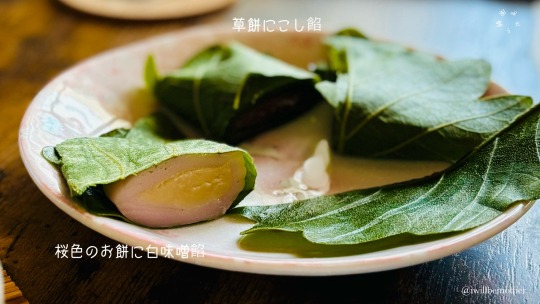
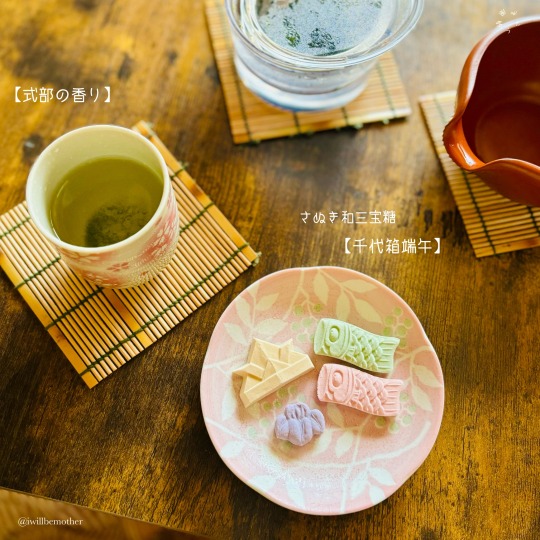
🍡いつも行く『緑水庵』さんで柏餅と干菓子買いました。白味噌あんが気に入っています🍡
🍵お茶はいつもの【式部の香り】ですが、新茶が出始めたので、何を買おうか🤔思案中💕
#tea#wagashi#japanese sweets#my post#my photo#japanese tea#green tea#ryokusuian#yay \(^o^)/ gifu!#お茶#日本茶#緑茶#和菓子#柏餅#緑水庵#higashi#干菓子#式部の香り#三國屋善五郎#和三宝糖#端午の節句
17 notes
·
View notes
Text

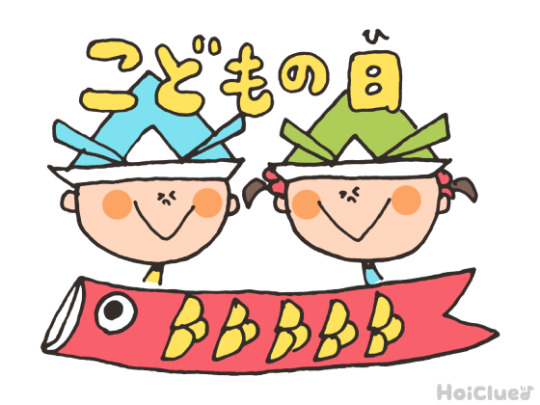
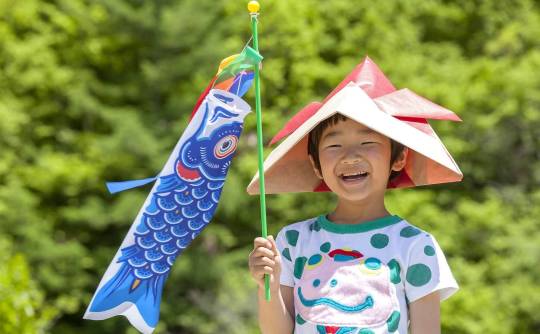

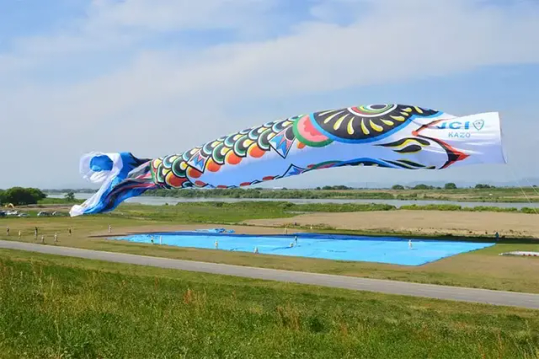
Sean bienvenidos japonsistasarqueológicos, a una nueva entrega cultural en esta ocasión os voy comentar la festividad, del día del niño que se celebra cada 5 de Mayo que se llama Kodomo no Hi y se escribiríaこどもの日 una vez dicho esto pónganse cómodos que empezamos. - ¿Cuándo surgió el día del niño?La festividad, surge en el siglo VIII d.c en lo que respondería al periodo Heian, posiblemente tendría influencia de china al respecto ya que se basó en Tango no Sekku. El Sekku se basa en los puntos de inflexión de las estaciones y se basa en la teoría de los cinco elementos del yin y el yang en China. - La forma tradicional de celebrarlo es ofrecer ofrendas estacionales a los dioses, rezar y comer juntos los productos de segunda mano.En el período Kamakura, en pleno auge de los samurais, se convirtió en un evento importante para orar por el crecimiento y la salud de los niños y la prosperidad de la familia, con adornos como armaduras, cascos, serpentinas de carpa y muñecos festivos. - Ahora a continuación mencionaré algunos dulces de los que se suelen comer el 5 de Mayo: Kashiwa mochi,Chimaki, beko mochi, akumaki , pastel no koi. - Espero que os haya gustado y nos vemos en próximas publicaciones y que pasen un feliz día del niño.
-
今回は、毎年5月5日に行われる「こどもの日」というお祭りについてお話しします。「こどもの日」とは、「こどもの日」と書いて「こどもの日」と読みます。 - こどもの日」の起源は、紀元8世紀の平安時代にさかのぼりますが、「端午の節句」が元になっていることから、中国の影響を受けている可能性があります。節句とは、季節の変わり目を表すもので、中国の陰陽五行説に基づくものです。 - 季節のお供え物を神に捧げ、祈り、中古品をみんなで食べるのが伝統的な祝い方です。 武士ブーム真っ只中の鎌倉時代には、甲冑や兜、こいのぼり、祝い人形などを飾り、子供の成長や健康、家族の繁栄を祈る大切な行事となりました。 - 柏餅、ちまき、べこ餅、あくまき、こいのぼりのお菓子です。 - 気に入っていただけたなら幸いです。今後の記事でお会いしましょう。そして、楽しい子供の日をお過ごしください。
-
Welcome to a new cultural delivery in this occasion I am going to comment on the festivity, the day of the child that is celebrated every 5th of May that is called Kodomo no Hi and it would be writtenこどもの日 once said this make yourselves comfortable that we begin. - When did Children's Day come about? The holiday, which dates back to the 8th century AD in what would be the Heian period, was possibly influenced by Chinese in this respect as it was based on Tango no Sekku. Sekku is based on the turning points of the seasons and is based on the five element theory of yin and yang in China. - The traditional way to celebrate it is to offer seasonal offerings to the gods, pray and eat second-hand goods together. In the Kamakura period, at the height of the samurai boom, it became an important event to pray for the growth and health of children and the prosperity of the family, with decorations such as armour, helmets, carp streamers and festive dolls. - Now here are some of the sweets usually eaten on May 5th: Kashiwa mochi, Chimaki, beko mochi, akumaki, no koi cake. - I hope you liked it and see you in future posts and have a happy children's day.
#日本#こどもの日#平安時代#中国#端午の節句#鎌倉時代#佐村河内#柏餅#ちまき#歴史#あくまき#ケーキ#こい#japan#KodomonoHi#Heianperiod#china#Tangonosekku#Kamakuraperiod#samura#Kashiwamochi#Chimaki#history#akumaki#cake#koi#culture#文化
12 notes
·
View notes
Text

武士の耀き
2018年、相模田名郷土資料館。
武士の志のように輝きを放つ。
#ightroom Classic#VSCOfilm#photographers on tumblr#lensblr#original photographer#original photographers#original photographers on tumblr#original photography#original photography blog#original photography on tumblr#photoblog#photography#spring#spring in Japan#spring mood#spring season#spring time#spring tint#May#Japan#Fujisawa#皐月#日本#相模原#相模田名郷土資料館#端午の節句#兜
203 notes
·
View notes
Text

Children's Day was originally called Tango no sekku. The custom of decorating miniature Japanese Samurai Armor and Samurai War Helmet.
Samurai Armor Age: May, 1862
2 notes
·
View notes
Photo

Koinobori (鯉のぼり), meaning 'carp streamer' in Japanese, are carp-shaped windsocks traditionally flown in Japan to celebrate Tango no sekku (端午の節句). This traditional calendrical event is now designated as Children's Day (子供の日, Kodomo no hi), a national holiday in Japan.
#Children's Day#Goro Sky Tower#Japan#Koinobori#Kyoto Prefecture#Landscape#Maizuru#Maizuru Bay#Mt. Goro-dake#Observation Deck#Photography#carp streamer#scenic spot#五老スカイタワー#子供の日#皐のぼり#端午の節句#舞鶴市#鯉のぼり
19 notes
·
View notes
Text
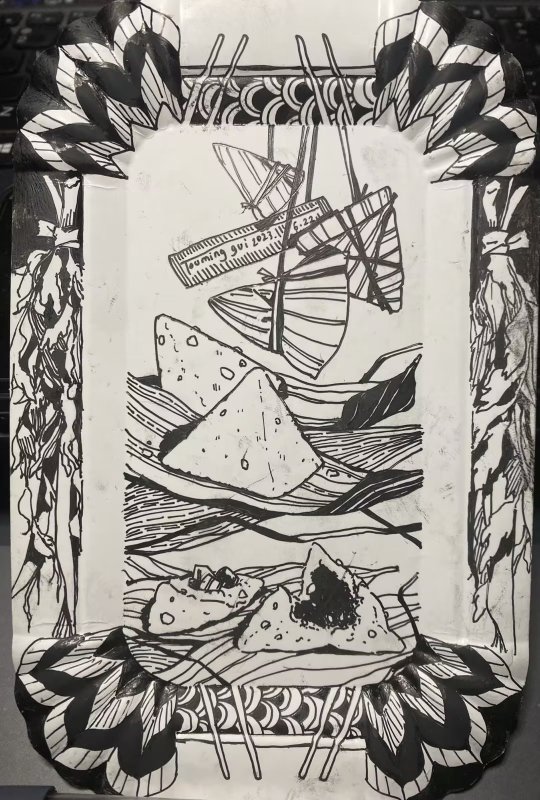
端午节快乐!
#端午节#dragon boat festival#端午節#端午の節句#粽子#rice dumpling#ちまき#painting#art#paint#drawing#artists on tumblr#illustration#绘画#draw#絵
4 notes
·
View notes




